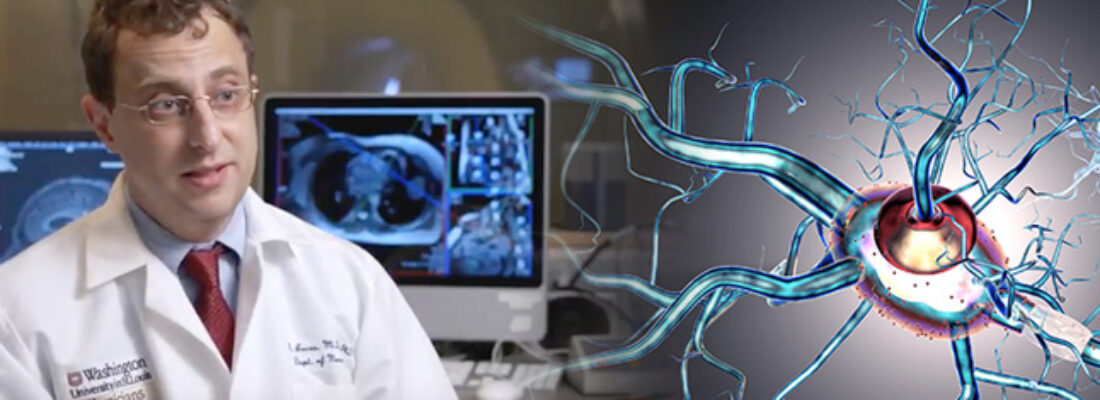Translational Science Benefits
The Diagnostic Procedures for Creutzfeldt–Jakob Disease (CJD) study explores diffusion tensor imaging (DTI) as an early biomarker for diagnostic purposes. CJD is a rapidly progressive neurodegenerative disease (RPD) with diagnosis often made at autopsy. Beau M. Ances, MD, PhD, MSc, was awarded ICTS pilot funding in 2009 for research to study CJD and DTI. The goal of this study was to identify early changes in the brain structure due to CJD that may allow for early intervention. The research led to hosting of the Evaluation of CJD & other Rapidly Progressive Dementias conference in St. Louis, a CJD Foundation Family Workshop in 2012, and several journal articles.1,2 The CJD research was important because it resulted in new preliminary diagnostic procedures and clinical practices and increased the community awareness of a rare and devastating disease. The results have led to procedures for earlier and less invasive diagnosis of CJD, benefiting both patients and healthcare workers.
Benefits
Demonstrated benefits are those that have been observed and are verifiable.
Potential benefits are those logically expected with moderate to high confidence.
Preliminary identification of clinical and diagnostic tests to distinguish CJD from other RPDs. demonstrated.
Clinical
Saves patients from need for brain biopsy; reduces risks to patients and healthcare workers. demonstrated.
Community
Recognition from the CJD Foundation as source of knowledge and assistance for patients and families; increased referral of CJD patients to Washington University. demonstrated.
Community
Change in Barnes-Jewish Hospital policy regarding treatment of CJD patients. demonstrated.
Policy
Benefits of the CJD study represent all four TSBM domains. Under the Clinical & Medical benefits domain, the CJD study has led to a new Barnes-Jewish Hospital policy for treatment of CJD patients and resulted in preliminary identification of clinical and diagnostic tests such as MRI and lumbar puncture to distinguish CJD from other RPDs. For the Community & Public Health benefits domain, the CJD study saves patients from the need for brain biopsy, reduces risks to patients and healthcare workers, and received recognition for the CJD Foundation as a source of knowledge and assistance for patients and families, which has led to increased referral and volume of CJD patients to Washington University. For the Economic benefits domain, fewer tests are being ordered for patients and the length of hospital stay has decreased. For the Policy & Legislative benefits domain, results of the CJD study have been communicated to State Health Boards with revisions in policies leading to an increase in reporting of CJD cases in Texas. These outcomes reflect tangible real-world health impacts.
- Wang LH, et al. Role of magnetic resonance imaging, cerebrospinal fluid, and electroencephalogram in diagnosis of sporadic Creutzfeldt-Jakob disease. J Neurol. 260,498–506 (2013).
- Kang P, et al. Sleep pathology in Creutzfeldt-Jakob disease. J Clin Sleep Med. 12,1033–1039 (2016).

